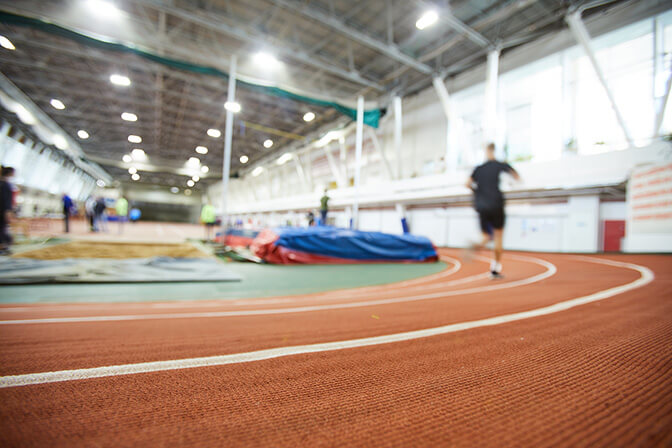
One of our more unknown sports at St. Luke’s is Indoor Track & Field. I recently contacted Coach Russell, St. Luke’s cross-country and indoor track coach, and asked him about what competing in indoor track & field was like. Although the names are similar to traditional track & field and indoor track & field, there are many differences.
Like traditional Track & Field, Indoor Track consists of running, jumping, and throwing events and culminates in a state championship. The Indoor Track season precedes Outdoor though and is held during the winter months inside enclosed facilities. There is currently only one facility in Birmingham that is used for the AHSAA Indoor season so there is a lot of travel involved for our team to compete in meets. The biggest difference is the environment in which the sport takes place. With the traditional track season, athletes compete outside during the spring with weather potentially acting as a major factor (wind, rain, heat, etc). However, when competing during Indoor track season athletes perform inside enclosed facilities during the winter and avoid all environmental factors. Another major difference is that indoor tracks are 200 meters long, while outdoor tracks are 400 meters long, so during indoor meets, athletes run the same distance with twice as many curves.
Although performances are in an enclosed facility, Indoor includes a good amount of the events found in the traditional track season such as long jump, triple jump, shot put, pole vault, 4x400m relay, 4x800m relay, 400m, 800m, etc. However, some fun events are unique to Indoor because of the smaller-sized track. These include the 60m sprint, 4x200m relay, and 60m hurdles. Throwing events are also limited in the indoor season. For safety reasons, only rubber shots are allowed for shot put (as opposed to brass or steel) and the javelin/discus events are excluded entirely.
The Birmingham Crossplex is the only facility used for competition, so athletes practice and condition the same way as in Outdoor season and simply travel up to Birmingham to compete in meets. To qualify for the Indoor State Championship, athletes have to compete in at least one Indoor Meet and meet the minimum standards in their events. Having an Indoor track season in the winter helps athletes transition into the outdoor season more smoothly. It allows track athletes earlier exposure to conditioning, strong competitors/potential rivals, injury prevention, and great performances.
